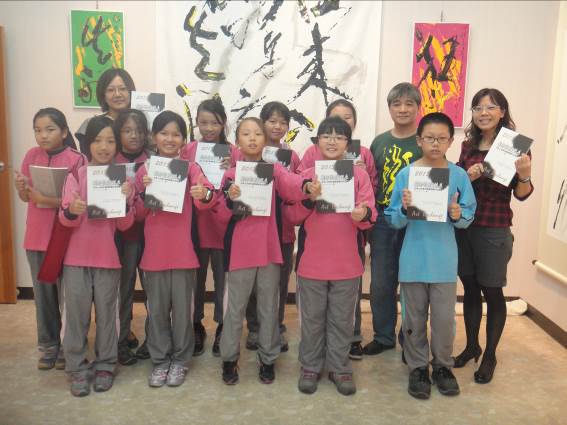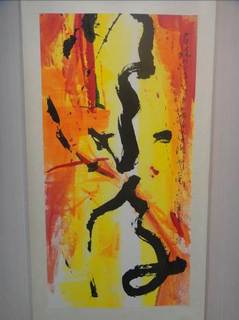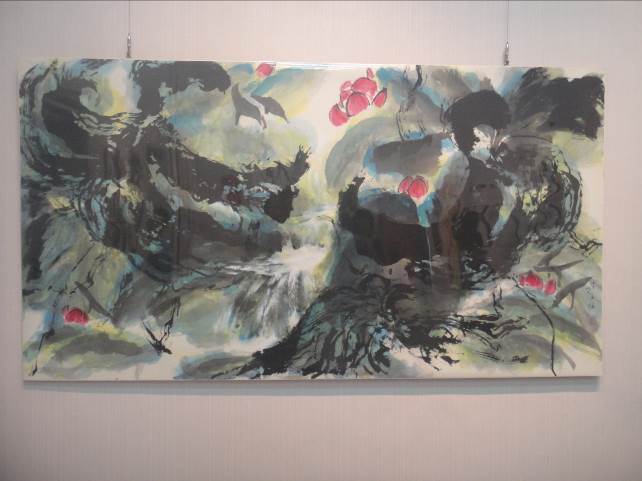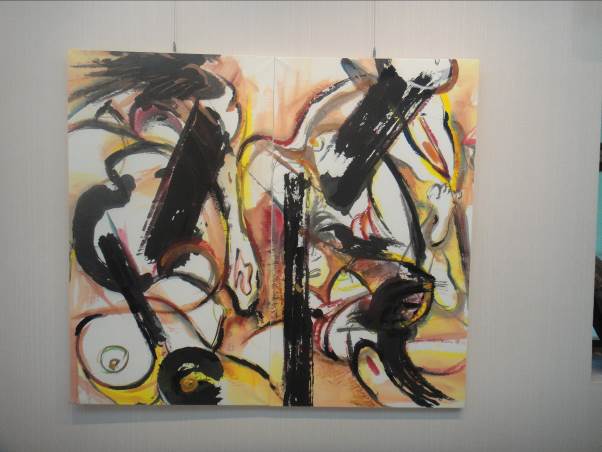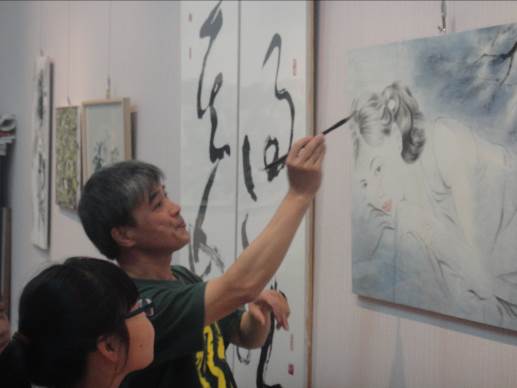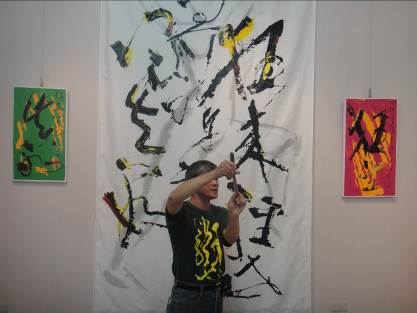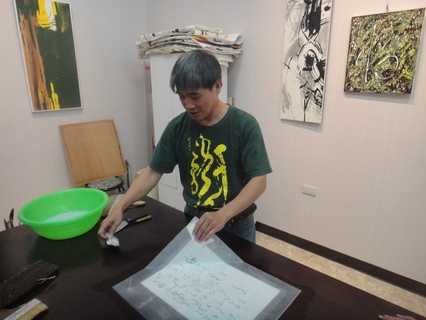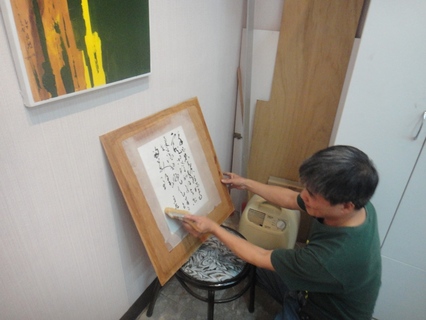An Unplanned Chinese Calligraphy Backing and Mounting Class
→Reflection
1. Activity background:
Knowing that Teacher Hsu Chin-fa was an expert in backing and mounting of calligraphy and painting works, school teachers and Teacher Ji from a printing house decided to have the Chinese calligraphy mounting class over a chat at a café with saxophones music when they unexpectedly ran into Teacher Hsu Chin-fa, who happened to be attending the Puyan Township Artists Exhibition, at the Puyan Township Library where they agreed to meet to discuss about selling postcards for charity.
2. Activity date and venue:
Date: December 6, 2013
Venue: Teacher Hsu Chin-fa’s workshop
Knowing that Teacher Hsu Chin-fa was an expert in backing and mounting of calligraphy and painting works, school teachers and Teacher Ji from a printing house decided to have the Chinese calligraphy mounting class over a chat at a café with saxophones music when they unexpectedly ran into Teacher Hsu Chin-fa, who happened to be attending the Puyan Township Artists Exhibition, at the Puyan Township Library where they agreed to meet to discuss about selling postcards for charity.
2. Activity date and venue:
Date: December 6, 2013
Venue: Teacher Hsu Chin-fa’s workshop
3. Activity content:
Teacher Hsu began the tour and enumerated his proud home collection. At the tour, Teacher Hsu mentioned that s/he had never memorized the dictionary of cursive script calligraphy before he turned 47. Teacher Hsu also encouraged us to seize the time, study harder, and train our brain as to memorize was not easy. Further, Teacher Hsu moved forward to the emphasis of this class – how to mount a completed calligraphic work. He explained that numerous procedures were involved in the course of turning freshly-finished calligraphy works into collectables, and the quality of backing and mounting procedures would affect a work’s impressions on spectators and its’ worthiness for collection. At our presence, Teacher Hsu demonstrated the backing technique “wet backing” (濕托) on his large workbench for writing Chinese calligraphy.
Teacher Hsu began the tour and enumerated his proud home collection. At the tour, Teacher Hsu mentioned that s/he had never memorized the dictionary of cursive script calligraphy before he turned 47. Teacher Hsu also encouraged us to seize the time, study harder, and train our brain as to memorize was not easy. Further, Teacher Hsu moved forward to the emphasis of this class – how to mount a completed calligraphic work. He explained that numerous procedures were involved in the course of turning freshly-finished calligraphy works into collectables, and the quality of backing and mounting procedures would affect a work’s impressions on spectators and its’ worthiness for collection. At our presence, Teacher Hsu demonstrated the backing technique “wet backing” (濕托) on his large workbench for writing Chinese calligraphy.
4. Afterthoughts:
Teacher Hsu gave each of us a copy of the “Collection of the Achievements of the Sino-Japanese Art Exchange Exhibition”, which took place this year. Taking home with me the book with Teacher Hsu’s inscriptions, I felt especially honored and glad that I had such a privilege to know those master calligraphers. I would be more than happy to pass on the aesthetic impressions of these masters’ great works.
Teacher Hsu gave each of us a copy of the “Collection of the Achievements of the Sino-Japanese Art Exchange Exhibition”, which took place this year. Taking home with me the book with Teacher Hsu’s inscriptions, I felt especially honored and glad that I had such a privilege to know those master calligraphers. I would be more than happy to pass on the aesthetic impressions of these masters’ great works.

